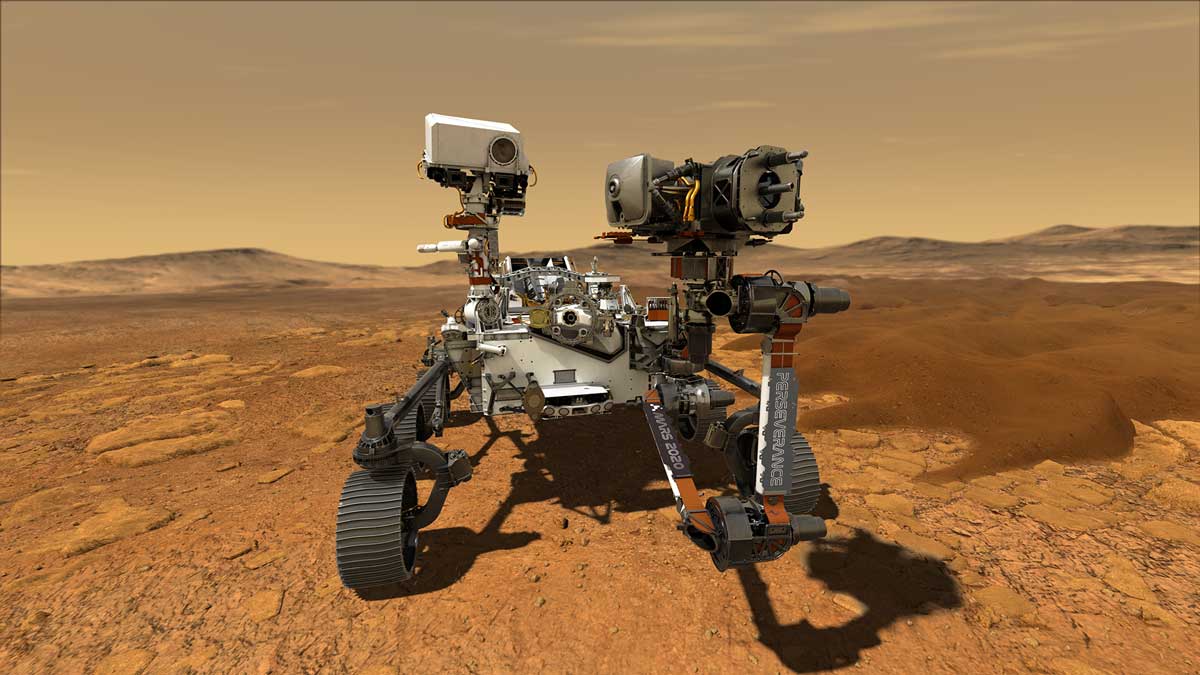Mars Perseverence Rover
Laser cutting and processing are not new to the aerospace industry. As the industry has grown and demanded higher precision and smaller sizes, laser cutting has allowed continued innovation while reducing component size and weight. One of the most exciting recent space exploration events is NASA’s Mars Rover, Perseverance, touching down on the red planet to begin unraveling some of the mysteries of Mars. Perseverance is equipped with tools to help it seek out sub-surface water (if it exists). Our partner company, FCT Water Treatment, Inc., wrote a blog about the importance of this mission.
The Past and Future of Mars
On February 18th, NASA Mars Rover, Perseverance, touched down on the surface of the red planet after more than 7 months in transit. While the commute may have been terrible (even without traffic!) the payoff will be worth it. Perseverance, like Curiosity before it, will scour the surface of Mars to unlock the secrets of its past, as well as the keys to future exploration and even potential human habitation! Unlike Curiosity, however, Perseverance has a few extra toys to help it unravel the mystery of our celestial neighbor. Among these are tools to help the rover seek out sub-surface water (if it exists), and/or evidence of ancient life in the form of preserved microbial substances.

Water… on Mars?
That’s right! It’s a pretty widely accepted belief among space scientists that the red planet used to be a lot wetter than it is today. In fact, many of the craters on the surface were likely actually lakes millions or billions of years ago! Jezero crater, where Perseverance touched-down, actually has, among other water-evidencing features, a preserved river delta. For this reason, it is believed that evidence of microbial life may still be preserved in specific types of rock found in the area. Perseverance is equipped with a mechanism that will allow it to drill into different areas in the crater and create samples for scientists to analyze to determine whether or not real alien life (albeit, microbial alien life) once existed on the planet next to ours. Unfortunately, Perseverance won’t be making a return trip to Earth, so the samples will simply be deposited safely on the red surface for another mission to retrieve in a few years.
Perseverance Isn’t Alone
No, we don’t mean that there are little green guys hanging out with the rover. What we actually mean is that Perseverance brought a friend in the form of Ingenuity, AKA the Mars Helicopter! The tiny chopper hitched a ride on the rover’s belly in order to have a chance at taking flight on Mars – the first-ever powered flight on the red planet, in-fact. Because of the difference in atmosphere between Earth and Mars, scientists weren’t sure if flight would be possible there, so Ingenuity will be taking several test flights to see how well the planet allows for air traffic. If all goes well, it’s possible that there may be manned flights on Mars in the future, which would make exploring a whole lot easier. As much as we like the buggies they sent to the moon, there aren’t exactly paved roads on other celestial bodies, so driving isn’t always quick or comfortable.
The Future of Mars
There’s a lot of mystery still surrounding Mars. The distance between our planet and it makes it difficult to do real hands-on research, but thanks to the rovers, humans are slowly unlocking the secrets of the fourth rock from the sun. Could there be human habitation in the future? Perseverance is equipped with an oxygen converter to test how well we can turn the largely carbon-dioxide atmosphere of Mars into breathable oxygen so that Mars may one day support human occupants. Was there ever life on Mars? It may take time, but technology is improving by leaps and bounds every day, and each mission gets us a little closer to uncovering the secrets of Mars’ past. Thanks to Mars’ once-watery surface, we may be close to discovering real alien life. How cool is that?
Learn More about Perseverence
For more information about Perseverance, Ingenuity, and the Mars Missions, check out the official Mars 2020 website. We’d like to give a big shout-out to the whole team of NASA scientists that put a robot on the surface of a different planet. That’s crazy and amazing.
